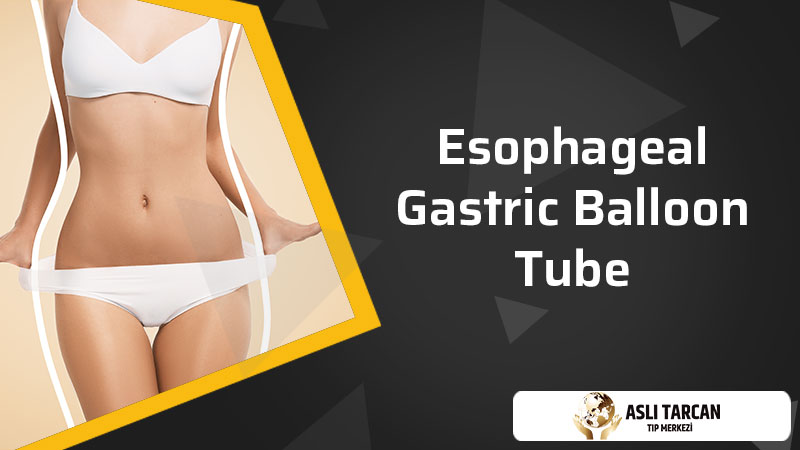Esophageal Gastric Balloon Tube
What is an esophageal gastric balloon tube, we will look at them in this article. I will reinforce my knowledge with you in this article. We learn new things about health every day. In our topic today esophageal gastric balloon tube. We have to learn carefully about such treatments. Since our health is at stake, we need to make an extra effort. When we lose our health, it is either very difficult or impossible to get it back. After that, everything starts to go wrong. The disease triggers the disease. Doctors become your best friend. Not to exaggerate, but you may see more than your family. Would you like to spend your life in hospitals? Personally, I would never want such a thing. That’s why I pay attention to what I do and what I eat. I recommend the same to you.
What Exactly is a Sengstaken Blakemore tube?
The Sengstaken Blakemore (SB) tube is a red tube used to halt or delay esophageal and stomach bleeding. Gastric or esophageal varices, which are enlarged veins produced by restricted blood flow, are the most common causes of bleeding. The Minnesota tube, a variant of the SB tube, can also be used to open or empty the stomach to prevent the insertion of a second tube, known as a nasogastric tube. At one end of the SB tube, there are three ports, each with a particular function:
Gastric aspiration port, which takes fluid and air from the stomach esophageal balloon port, which inflates a tiny balloon in the esophagus esophageal balloon port, which inflates a small balloon in the esophagus esophageal balloon port, which inflates a small balloon in The gastric balloon port is used to inflate a balloon in the stomach. At the opposite end of the SB tube, there are two balloons. When these balloons are inflated, they apply pressure on bleeding sites in order to halt blood flow. To reach the stomach, the tube is usually entered by the mouth, although it can also be put through the nose. After the bleeding has stopped, doctors will remove it.
Doctors advise against using the SB tube if you:
- Varicose hemorrhage ceases or slows.
- The patient has recently had surgery involving the esophageal or stomach muscles.
- The patient has an esophageal blockage or narrowing.
Are There Any Risks Associated with Using this Device?
The use of the SB tube has a number of hazards. You should expect considerable discomfort from the surgery, particularly if the tube was placed through the mouth. The SB tube might interfere with your capacity to breathe if it is misplaced. Other issues that might arise as a result of incorrect installation of this tube or burst balloons include:
- Hiccup
- Pain
- Recurring bruising
- Aspiration pneumonia is an illness caused by inhaling food, vomit, or saliva into the lungs.
- Mucosal ulceration or ulcers on the mucous membranes esophageal ulceration when painful ulcers occur in the lower section of the esophagus severe laryngeal obstruction, or a blockage in your airways that inhibits oxygen intake
When should you utilize SB tubes?
It is used to treat life-threatening upper GI bleeding caused by ruptured esophageal/stomach varies when conventional therapy such as band ligation or adhesive injection has failed or is not accessible.
This is merely a stopgap measure until more precise methods to control the bleeding may be performed.
What do you require before you begin?
SB tube is typically maintained in the freezer this assists in the installation by increasing stiffness.
Prepare two bladder lavage syringes to suction the esophagus and stomach lumen, as well as another to inflate the gastric balloon.
Metal artery forceps with a strong grip for closing balloon ports
If you need to inflate the esophageal balloon in addition to the gastric balloon, you will require:
Luer Lock syringe 50cc
An adapter for inserting the tapered end into the esophageal port, as well as the Luer lock-end sphygmomanometer (adapter available in the chest drainage kit)
The three way valve : A detachable cuff sphygmomanometer used to remove the blood pressure cuff and attach the Luer lock end of the chest relief adapter here.
How to Make an Addition
Discussion about the optimum location for the procedure: The anesthesiologist likes the theater to Rhesus.
The patient is lying in the standard endoscopic posture.
In general, patients who require balloon tamponade to reduce variceal bleeding should also be intubated. Airway protection, on the other hand, is especially critical when:
encephalopathy
If you provide sao290 percent aspiration pneumonia leak control
Inflate the balloons to see if there are any leaks. Apply enough KY gel to the tube and insert it into the mouth like the NG tube they keep in the freezer in movie theaters and Endoscopy units to increase stiffness. Due to the bent position you hold, it can make insertion of an NG tube problematic. A laryngoscope and Magill’s forceps may be required to pass the jack through the pharyngeus.
After reaching 45 cm, you should aspirate the stomach contents of the tip. You wait for it to extend into the stomach lumen, which will be confirmed by your measurement of pH, which will then be confirmed with the portable CXR. After ensuring that the tip is in the stomach, gently draw and inflate the gastric balloon with 200 ml of air (using the two artery forceps as clamps and inserting the clips given with the tube). Some people prefer to use contrast blended water rather than air. It should glide for a while until coming to a halt when it comes to rest on the GOJ then it should pump 50-100 ml of air and draw out the tube to apply pressure on the GOJ.
This is sufficient to halt variceal bleeding in the majority of individuals. If bleeding continues after inflating the gastric balloon, the esophagus must be inflated.
Between air fills, squeeze the tube.
Finally, secure the tube and maintain a note of the distance between the tip and the incisors, which is usually approximately 30-35 cm.
The following factors influence the initial success of bleeding control:
- Experience as an operator
- Concurrent treatment ( Terlipressin and antibiotics )
The Popularity of Esophageal, Gastric Balloon Tube
Esophageal, gastric balloon tube is an endoscopic procedure for treating obesity. This procedure involves inserting a tube, which is inserted through the mouth and esophagus, into the stomach. EGBT is a non-surgical weight loss procedure where a flexible silicone balloon, or gastric is thrown into the stomach through the tube. The gastric balloon tube will remain in place for about six months, and during this time, it will help to decrease the amount of food that can be eaten each meal by limiting the amount of space within the stomach. It will give users an opportunity to re-evaluate their lifestyle choices and develop healthier habits.

This procedure aims to help a person lose weight by reducing calorie intake while also helping to reduce food cravings. This procedure has proven successful in helping people lose weight and keep it off long-term. Additionally, research suggests that this treatment may help reduce risk factors associated with diseases such as diabetes, heart disease, and stroke. As such, Esophageal, gastric balloon tube may be a viable option for those looking to make healthier choices and begin living healthier lives. it is important to seek advice from a doctor before undergoing any medical procedure or making major lifestyle changes.



